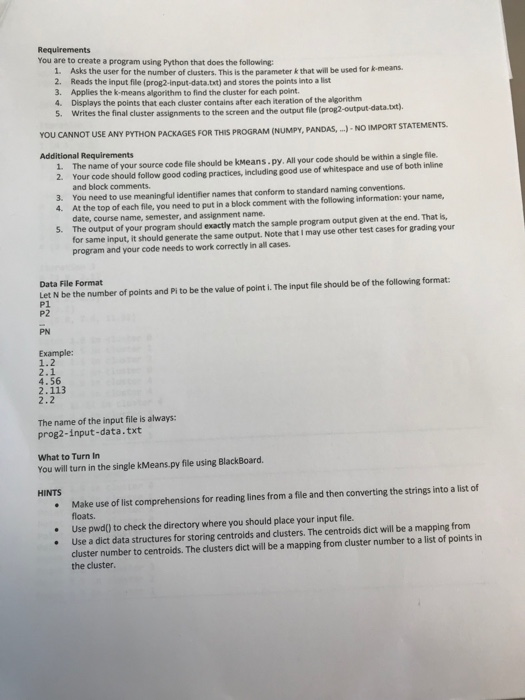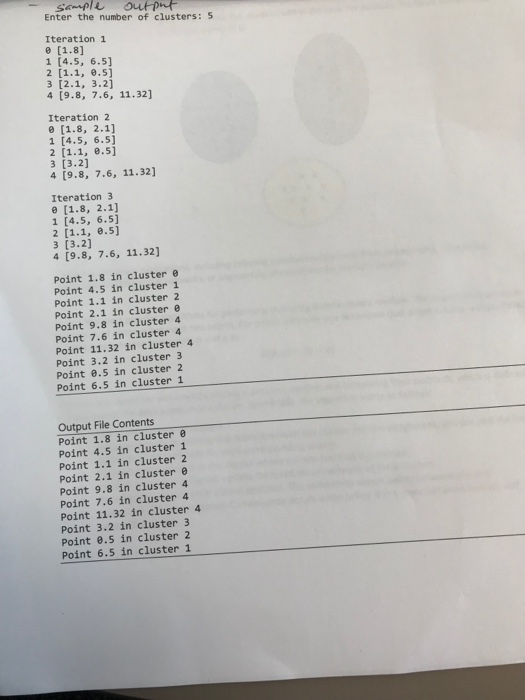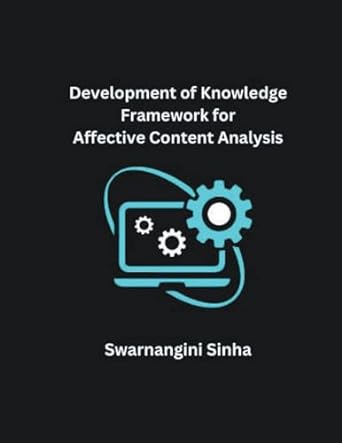I think they want us to use list comprehensions to solve it. 


Clustering is a process of identifying groupings QLe. clusters) within the data. For example, the feure below shows three clusters of two-dimensional data points (X's): Clustering has many applications, including inferring population structures from genetic data, recognizing communities within social networks, or segmenting of customers for market research. One of the most popular algorithms for performing clustering is the k-means method. The algorithm depends on the notion of distance between two points. For points with only one dimension Gust single values), we can define the distance between two points p and q as The k-means algorithm will work by placing points into clusters and computing their centroids, which is defined as the average of the data points in the cluster. Specifically, the algorithm works as follows: 1. Pick k, the number of clusters 2. Initialize clusters by picking one point (centroid) per cluster. For this assignment, you can pick the first k points as initial centroids for each corresponding cluster 3. For each point, place it in the cluster whose current centroid it is nearest. 4. After all points are assigned, update the locations of centroids of the k clusters 5. Reassign all points to their closest centroid. This sometimes moves points between clusters 6. Repeat 4,5 until convergence. Convergence occurs when points don't move between clusters and centroids stabilize Requirements You are to create a program using Python that does the following: 1. Asks the user for the number of clusters. This is the parameter k that will be used for k-means. 2. Reads the input file (prog2-input-data.txt) and stores the points into a list 3. Applies the k-means algorithm to find the cluster for each point. 4. Displays the points that each cluster contains after each iteration of the algorithm 5. Writes the final cluster assignments to the screen and the output file (prog2 YOU CANNOT USE ANY PYTHON ON PACKAGES FOR THIS PROGRAM (NUMPY, PANOAS.-)-NO IMPORT STATEMENTS THIS PROGRAM Additional Requirements The name of your source code file should be kMeans.py. All your code should be within a single file. Your code should follow good coding practices, including good use of whitespace and use of both inline and block comments You need to use meaningful identifier names that conform to standard naming conventions. At the top of each file, you need to put in a block comment with the following information: your name, date, course name, semester, and assignment name. 1. 2. 3. 4. 5. The output of your program should exactly match the sample program output given at the end. That is, for same input, it should generate the same output. Note that I may use other test cases for grading your program and your code needs to work correctly in all cases Data File Format Let N be the number of points and Pi to be the value of point i. The input file should be of the following format: Pl P2 PN Example: 1.2 2.1 4.56 2.113 2.2 The name of the input file is always: prog2-input-data.txt What to Turn In You will turn in the single kMeans.py file using BlackBoard. HINTS e Make use of list comprehensions for reading lines from a file and then converting the strings into a list of floats Use pwd() to check the directory where you should place your input file Use a dict data structures for storing centroids and clusters. The centroids dict will be a mapping from cluster number to centroids. The clusters dict will be a mapping from cluster number to a list of points in the cluster sample Enter the number of clusters: s Iteration 1 1 [4.5, 6.5 3 [2.1, 3.2] 4 [9.8, 7.6, 11.32] Iteration 2 1 [4.5, 6.5 3 [3.2] 4 [9.8, 7.6, 11.32] Iteration 3 1 [4.5, 6.5 3 [3.2] 4 [9.8, 7.6, 11.32] Point 1.8 in cluster e Point 4.5 in cluster 1 Point 1.1 in cluster 2 Point 2.1 in cluster e Point 9.8 in cluster 4 Point 7.6 in cluster 4 Point 11.32 in cluster 4 Point 3.2 in cluster 3 Point 8.5 in cluster 2 Point 6.5 in cluster 1 Output File Contents Point 1.8 in cluster e Point 4.5 in cluster 1 Point 1.1 in cluster 2 Point 2.1 in cluster e Point 9.8 in cluster 4 Point 7.6 in cluster 4 Point 11.32 in cluster 4 Point 3.2 in cluster 3 Point .5 in cluster 2 Point 6.5 in cluster 1









